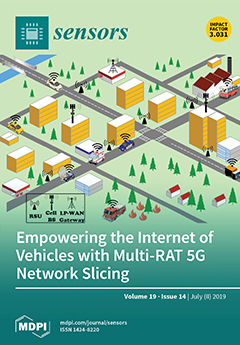Typically, lane departure warning systems rely on lane lines being present on the road.
However, in many scenarios, e.g., secondary roads or some streets in cities, lane lines are either
not present or not sufficiently well signaled. In this work, we present a
[...] Read more.
Typically, lane departure warning systems rely on lane lines being present on the road.
However, in many scenarios, e.g., secondary roads or some streets in cities, lane lines are either
not present or not sufficiently well signaled. In this work, we present a vision-based method to
locate a vehicle within the road when no lane lines are present using only RGB images as input.
To this end, we propose to fuse together the outputs of a semantic segmentation and a monocular
depth estimation architecture to reconstruct locally a semantic 3D point cloud of the viewed scene.
We only retain points belonging to the road and, additionally, to any kind of fences or walls that
might be present right at the sides of the road. We then compute the width of the road at a certain
point on the planned trajectory and, additionally, what we denote as the fence-to-fence distance.
Our system is suited to any kind of motoring scenario and is especially useful when lane lines are
not present on the road or do not signal the path correctly. The additional fence-to-fence distance
computation is complementary to the road’s width estimation. We quantitatively test our method
on a set of images featuring streets of the city of Munich that contain a road-fence structure, so as
to compare our two proposed variants, namely the road’s width and the fence-to-fence distance
computation. In addition, we also validate our system qualitatively on the Stuttgart sequence of the
publicly available Cityscapes dataset, where no fences or walls are present at the sides of the road,
thus demonstrating that our system can be deployed in a standard city-like environment. For the
benefit of the community, we make our software open source.
Full article






